How to increase productivity in the country? Expert advice. How to increase productivity and soil fertility
Compliance with the timing of sowing crops.
Choice result optimal timing sowing will be the formation of hardy and competitive crops in relation to pests, as well as a decrease in the likelihood of developing plant diseases and high yields. To determine the optimal sowing time, you must:
- know the total duration of the vegetation of the plant and its compliance with the climatic zone;
- comply with the requirements of cultivated crops for soil temperature and moisture consumption;
- take into account the contamination of crops.
Seed use High Quality, the most productive varieties and hybrids.
The realization of the potential of one or another variety of agricultural crops depends on this. Purchase seeds exclusively from trusted producers with a good reputation - they will ensure good germination.
Proper care.
An important factor in increasing yields is pre-sowing tillage, harrowing, plowing, timely sowing, plant protection from diseases, pests and weeds, regular work to improve soil fertility. The treatment of plant seedlings with retardants, which can not only accelerate growth, but also greatly facilitate harvesting, can also increase yields.
Compliance with crop rotation.
Competent crop rotation will contribute to the replenishment nutrients soil, better use of fertilizers, protection of soil from erosion, prevention of the spread of pests, weeds and diseases. Agronomists know that crops should be rotated with each other - this way an optimal balance of nutrients will be created in the soil, therefore, the yield of subsequent crops will increase.
Forecasting weather factors.
Knowing the features of the climatic zone and the time of onset of the "critical phases" of the growing season, it is possible to take the necessary measures to protect plants. For example, a number of crops require overwintering, so they are sown in the fall. These include winter varieties of wheat, rye, barley, etc.
The quality of agricultural machinery.
Labor productivity in the field directly depends on the quantity and quality of agricultural machinery. It is worth updating worn-out elements in a timely manner in order to avoid breakage at an unnecessary moment. Only with the help of uninterruptedly operating equipment it is possible to increase crop yields - uneven and untimely processing leads not only to equipment downtime and unnecessary time costs, but also to the loss of a significant part of crop production.
Yield increase- This is a controlled process that can be independently managed and, if necessary, corrected. Follow the basic recommendations, use only proven products and preparations, and at the end of the season you will be able to harvest a rich harvest.
The amount of harvest obtained from your favorite fruit trees depends not so much on the condition of the soil on which they germinate (although, of course, you should not skip the mandatory top dressing), but on environment. The main component of increasing fruiting should be to attract pollinating insects to trees. To do this, plant honey and nectar-bearing plants such as dill, cumin, borage between them in the garden and spray the plants with a sugar solution during flowering. Pay attention to the position of the branches on...
Every gardener knows that fruit crops are propagated not only by seeds, but also vegetatively. These two types of reproduction are characterized by certain disadvantages and advantages. seed propagation- this is the process of fusion of male and female germ cells with the formation of a zygote, which forms a new plant. Seed propagation has its drawbacks and its advantages. For example, the advantage is that most fruit crops forms full-fledged seeds only as a result of cross-pollination different varieties, forms, then the hereditary basis of seed offspring ...
Every grower wants more early harvest. This is where expert advice comes in handy. If there is a desire to try sowing seeds in autumn and winter, then follow the following recommendations. Unsprouted seeds of carrots, dill, parsnips, onions, lettuce, cabbage, garlic, and beetroot use free areas. The soil is cultivated in the second half of summer. After all have been removed plant remains, weeds are collected, the site is dug up and applied to the soil organic fertilizers, and in the spring - nitrogen. Large lumps formed ...
Not many gardeners can boast of a really solid harvest, without the use of chemistry, of course! Often the reasons are laziness or lack of human strength. When there is not enough human strength, it is not so easy to keep track of almost all cultures, since there is always enough work in every garden plot. But if you invest so much effort, and the result is still not pleasing, you should use the usual rules that must be followed. The first thing to do...
Sometimes you can hear that a plot of 6 acres gives only losses. I will never agree with this opinion, because it contradicts practice. For example, my experience. I got my 6-hundredth garden, like other members of our garden partnership, in a former swamp. Of course, we have cultivated the swamp, but the consequences of it still let you know. But as they say, "the will and labor of man create wondrous divas." All that I grow, I will not list ...
The potato may be the only crop that has been developed for centuries. But when they mastered it. It is in the address of the potato that it is said: "Its virtues are so great that it will forever remain the favorite food of the people." In a word, the second bread. After all, potato protein in terms of biological value is on a par with bread protein. In addition, the tubers contain many vitamins, calcium salts, iron and other substances that people need for health. Good yields of tubers can be obtained almost everywhere ...
At the end of summer, potato furrows look variegated: on some bushes the tops have dried up, or even rotted, on others it has turned yellow and begins to dry out. But part of the planting is lush green, continuing to grow. Involuntarily you will think: when is it better to start cleaning? The desire to get a bigger harvest suggests - wait a week or two for the green bushes to pick up tubers. The ones under the withered bushes will wait. But after all, a delay in harvesting inevitably threatens the death of part of the crop from various diseases, and ...
There are no special secrets, except, perhaps, one: I do not deviate one iota from the agricultural technology that I came to as a result of more than 25 years of experience in growing raspberries. If during the time, starting from the germination of the shoots and ending with their fruiting, one or two measures are not completed, then expect a decrease in the yield, because everything is important here: how you formed the bush, how you fertilize it, how you finally planted it. I plant raspberries no closer than a meter one bush from ...
Long can grow fruit tree in one place - up to 100 years or more. But every year it will not be the same plant that it was before. It seems that the changes are imperceptible, but in fact the tree is constantly changing both its appearance and structure. Some of its parts, organs and tissues grow annually, increase in volume and mass and live for a number of years, others are formed at the beginning of the growing season and ...
Unstable weather late spring: either hot, as in the middle of summer, then a sudden cold snap, right up to frost; then the dry land stands and no end is visible to it, then an unexpected wind will bring rain, but so cold that everything seems to have shrunken and froze. To match the weather and mood of the gardener. Either the thought worries him, no matter how it dries up both the soil and the plants, then, on the contrary, no matter how everything is flooded. Whatever you say, spring is for the gardener...
For over 400 years potatoes have been grown in Europe. During this time, breeders have adapted it exclusively to reproduction by tubers. However, such breeding has disadvantages: a significant part of the crop has to be left for planting; aging of varieties occurs quickly; various diseases, especially viral ones, are easily transmitted through tubers, and this leads to the degeneration of potatoes. These disadvantages can be avoided if potatoes are propagated not by tubers, but by seeds. Not to say that there were no such attempts before, but the result did not work, ...
We have two twelve-year-old sea buckthorn grown from seeds. From each we shot annually, depending on the weather, 10-15 kg of fruit. And last summer they collected 25 kg each, the harvest, I must say, is unusual. Many fruits set in the spring. As always happens, part of the ovary began to fall off, and quite strongly. And I treated the foliage with a solution of urea and boric acid, 10 g of both per bucket of water. Further care behind the plants was common...
For each vegetable and fruit, there are methods for increasing yields. But there are those who raise the harvest by suburban area generally.
A good month to increase the fertility of the dacha is July. Planting and weeding behind, harvest ahead. It's time to start increasing the yield and developing for the future.
Row crops, such as potatoes, at this time should be watered not with ordinary tap water, but with sparkling water (of course, not mineral water from the store). According to the researchers, this method of watering increases the yield by eight percent. Foliar application iodine into the soil gives an even greater effect for any crops.

Harvest in the country can be increased
The ripening of tomatoes can be accelerated by putting a regular plastic bag on a branch with ripe and unripe fruits. In this case, volatile substances that stimulate the ripening of tomatoes will not escape into the atmosphere, but will help unripe tomatoes ripen. The result will be obvious in a couple of days.
For the same purpose, at a height of three centimeters from the soil, tomato stalks can be wrapped with wire, squeezing the skin. In addition to accelerating ripening, this will increase the sugar content of the fruit.
To increase the yield of carrots, they cut it (the leaves are shortened). From regular haircuts, root crops get fat and gain weight.
top dressing
Fertilizing vegetables with fertilizers must be done correctly, otherwise you will not get the effect. The rules here are as follows.
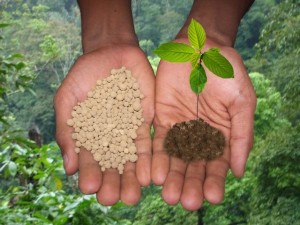
Secrets of loosening and weeding
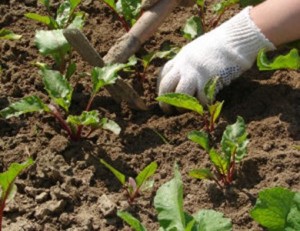
California worm
We all know about the benefits of earthworms for the soil. Their American counterpart, the California worm, was specially bred by US geneticists to help farmers. In a day, such a worm produces humus twice its weight!
If you buy fifty individuals of the California worm and send them to graze in your country house, by the end of the season, thousands of red worms will already live on the site. Moreover, the life expectancy of your new friend is fifteen years. And every year the underground population garden plot will increase.

California worm improves soil fertility
coco substrate
Every single useful substance came to our gardeners from tropical islands. These are shredded coconut shell fibers that you can buy at the store. From one tablet of the substrate, after soaking it, three liters of substrate are obtained, suitable for application to the soil, from a briquette - ten liters.
Any crops grow well on the substrate, since it contains a lot of useful substances, well retains water in the soil and perfectly passes oxygen. In addition, it protects plants from pests and insects. The use of the substrate doubles the time it takes for plants to grow from seeds. And the fruits are environmentally friendly, since the need for fertilizers is reduced significantly.
How to grow a good crop without chemistry?
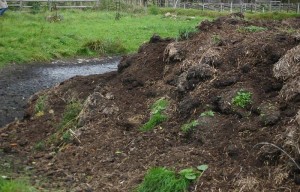
Application of humus replaces chemical fertilizers
Magical chemistry, no doubt, can dramatically increase productivity. But millions of people still prefer to do without it if possible, if there is one. natural methods increasing fertility.
It is very important for a gardener to learn the basics of crop rotation. That is, to figure out for yourself which crops should be grown on their beds after which ones, so that the fertility of the soil does not decrease from year to year, but, on the contrary, steadily increases, the crops growing on it become more powerful and viable.
The soil is improved by the annual application of organic fertilizers - liquid dressings, humus, as well as ash and sand. There are special plants - green manure, which are planted next to cultivated plants specifically to improve the soil. The same goal is achieved by mulching the soil.
If there is an invasion of pests, you need to think seven times before using chemicals to destroy them. It should always be remembered that a person, like microbes and insects, also consists of cells. The chemicals left in the soil will be absorbed by garden and horticultural crops.
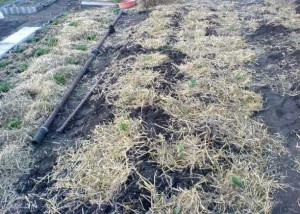
They will end up on yours eventually. dinner table. It is possible that they will poison your body. It is better to miss part of the harvest. In addition, there are many folk remedies acting no worse than chemicals. But the fruits are environmentally friendly.
If, when planting plants, compost and humus are introduced into the wells, the yield automatically increases by one and a half to two times. Increases seed germination.
Everything open areas soil must be covered with mulch. In the summer we do it in the garden, and in the fall - in the garden after harvesting. Straw, grass clippings, hay, leaves, food waste, humus, dead weeds, compost, shredded cardboard and paper are used as mulch.
We plant green manure
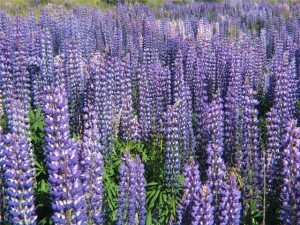
Siderates increase yields and fight weeds
These are plants that I plant specifically so that when they grow up, I plow them into the soil as organic fertilizer. They are rich in useful for garden and horticultural crops substances. Green manures also create a system of tubules in the soil, accumulate nitrogen in it, serve as food for beneficial worms and microorganisms, create shade to protect crops from hot rays, and protect the soil from blowing and erosion.
Green manure includes, first of all, all legumes: beans, vetch, peas, lupins, lentils; sainfoin, soybeans, clover, beans, phacelia, sochevnik, as well as buckwheat and rye. Three successive legume crops on a plot are equal to full manure coverage. All these plants tolerate cold well, and their roots intensively loosen the soil.
The peel of fruits and vegetables is also an excellent organic fertilizer. It contains a large percentage of vitamins and nutrients. Therefore, their place is not in the garbage heap, but in the garden.
In late August and early September gardeners harvest potatoes. The grown crop will please someone, someone will sadly remark that "the game is not worth the candle." Why, then, sometimes the results of the work on growing the “second bread” so beloved by Russians differ so much in neighboring plots?
Having harvested the tubers, gardeners begin to prepare the foundations for the future harvest. What needs to be done to make it happy for you next year? I hope that the tips and recommendations below will be useful for beginner potato growers, as well as for those who have been planting tubers for more than a year, but are dissatisfied with the results.
Potatoes are grown by many, and it is no secret to anyone that the harvest depends not only on climatic conditions, the season and planting care. The first role is played by the quality of the seed material used for planting. And it, according to official statistics, is now extremely low in Russia. The fact is that in the process of the annual selection of seed tubers for the next garden season from their own potatoes, a whole bunch of viral diseases gradually accumulate in them. That is why every year the yields are getting smaller and smaller, despite the quality of planting care. As a result, it turns out that it becomes unprofitable to grow potatoes - there are a lot of labor and material costs, and a crop with a gulkin's nose.
So you have to pay a lot of money for elite planting material, or learn how to grow potatoes from seeds. In other words, planting material is the basis for obtaining large yields.
But there are other factors that can play a significant role in increasing yields, provided that quality planting material.
In general, potatoes are a very fertile and plastic culture. Its low productivity among Russian gardeners is explained by ignorance of it. biological features, the use of random planting material of low reproductions for planting and violation of cultivation technology.
In many Russian gardens, potatoes are still grown according to a simplified, primitive scheme: planting - hilling - harvesting. For planting, they mainly use what they have to - degenerate seed material of long-term use, which means unknown mass reproduction, since few people carry out simple seed-growing work - the selection of tubers for seeds. Not yet included in the practice of cultivating potatoes and the use of techniques to combat late blight, including the timely spraying of plants with protective preparations, which leads to a significant crop shortage, and much more.
Method 1 - high-quality planting material
Without having it at hand, as practice shows, it is better not to plant potatoes - you can’t wait for the harvest. Although for some reason, many gardeners do exactly this year after year and claim that potatoes will grow anyway. And then they dig up little things near a bucket of an incomprehensible type and rightfully believe that they have faithfully fulfilled their duty in providing the family with potatoes.
Today, there is no problem to buy elite planting material that is not infected with viral and other diseases - in the spring many gardening stores sell it. True, it won't come cheap. But you can go the other way, growing this elite planting material yourself from seeds, however, that's another story. Many experienced gardeners learned how to grow and propagate valuable varieties through seedlings. In this case, seedlings for an entire plantation can be obtained from several valuable super-elite tubers (From the Editor: the most experienced potato grower G.D. Sherman spoke about this method more than once in our magazine).
Method 2 - crop rotation
There is nothing new in this technique for you and me - everyone knows that most cultures will never give good harvest when landing at the old place. Potatoes are no exception, although for some reason many people believe that this crop can be grown in the same place for many years. In fact, all advanced Western farms return it to its former place no earlier than in 3-4 years, when the soil is cleared of pathogens of many fungal and bacterial diseases.
Method 3 - highly fertile soils
The Dutch, by the way, allocate only areas with a very high agricultural background for potatoes, knowing full well that there can be no rich harvest on poor land. For some reason, we have a completely opposite approach in Russia - as a rule, plots are allocated for potatoes where nothing else can be planted.
Method 4 - plant not densely
Of great importance is the width of the potato row spacing. Dutch farmers, for example, plant potatoes with row spacings of 75 cm. Unfortunately, due to land savings, row spacings of only 40-50 cm can be seen in our plantings. This makes hilling with loose soil difficult, developing roots are pruned. As a result, plants lag behind in growth and development. Due to the lack of soil for hilling, the tubers are exposed and green, which is unacceptable when growing ware potatoes. To obtain a full-weight crop, the row spacing for early varieties potatoes recommended 65-70 cm, for late - 75-80 cm.
Method 5 - small ones are not always remote
Large tubers compared to small ones (if we are talking not about the elite), give earlier and more friendly shoots and form a powerful bush. In the experiments of the Research Institute of Potato Farming, the yield from tubers weighing 100 g was 25 percent higher than from 50 g tubers. But this was observed only in seasons favorable in terms of meteorological conditions and on a high agricultural background: when fertile soil and timely care. The difference was evened out in dry years and on sandy, soddy-podzolic soils, and on medium-cultivated loams.
This is explained by the fact that powerful plants from large tubers, capable of synthesizing more organic substances for filling tubers, need an increased level of nutrition and water supply. With a lack of moisture, such plants suffer more due to intense evaporation than less developed ones. And the middle peasants in the conditions of any deficit develop more rhythmically.
The mass of the planting tuber also affects the timing of the harvest. For example, harvesting potatoes planted with large tubers is possible 20-40 days earlier. From large seeds collect heavier tubers.
When damaged by frost, large tubers re-grow sprouts faster due to a large number spare kidneys.
Method 6 - down with flowers
A flowering potato plot looks, no doubt, quite beautiful, but this beauty deprives us of 20-25% of the tuber crop. The organic substances formed in the potato plant are actively distributed throughout all organs. They also flow into flowers, the formation of which coincides with tuberization. Studies have shown that during this period, 40-45% of organic matter flows into the tubers, 23-25% remains in the stems and leaves, and over 25% in the flowers.
This is how the flowers "rob" the tubers. The latter become depleted in starch, and smaller in size. As a result, such tubers next year will yield a lower yield than those that have had flower stalks removed. This is due to the fact that the growth and development of potato seedlings in the first period is carried out due to organic matter mother tubers. Therefore, potato growers should not wait for flowers to appear, but destroy flower stalks already at the beginning of budding.
Method 7 - you can’t do without modern and highly active fertilizers
It implies the introduction of these same fertilizers when planting potatoes in the holes. This is much more convenient than later figuring out that the potatoes are missing something and carrying out numerous feedings.
As for fertilizers, today many of them can significantly affect the potato crop.
Urgas
Let's start with a biological fertilizer of the 21st century (that's what it is called), the effect of which is very high, and you can cook Urgas on your own during the winter on the basis of a purchased concentrate of Baikal-EM1 bacteria. How to cook Urgas can be read in the instructions, and there were plenty of publications on this topic. And in a nutshell - this is all the food waste that has accumulated in your apartment over the winter (believe me, there will be a lot of them), treated with special bacteria. Do not be afraid, with a competent approach to business, there will be no smells in the apartment, and not a single guest will guess that you have an active production of fertilizers at home. The only thing is that all the resulting fertilizer must be folded into thick plastic bags(the same as used by fishermen for fish), sprinkling with stale sawdust to reduce the humidity of the fertilizer (and so that, God forbid, nothing leaks anywhere), tie it very carefully and send it to the garden. It is possible in the winter in a backpack, if you make regular flights to your site, you can also in the spring by car.
When planting, I add one handful of Urgasy to the hole and mix it thoroughly with the rest of the soil components. This point is extremely important, because. the fertilizer is very concentrated and tuber burns may occur. I have no official data on increasing the yield of potatoes when using Urgasa, but from personal experience I can say that the bushes are developing much more actively.
Pixa Super Compost
It is also a very active fertilizer with a mass of beneficial microorganisms that help plants absorb nutrients. It is also introduced not randomly, but strictly into the holes during planting. It can increase the yield of potatoes by at least 1.5-2 times. I have data on the use of Pixa when growing potatoes in one of the state farms near Moscow. They indicate that the most effective option should be considered the local introduction of Pixa into the planting rows. And they also say that Pix's fertilizer is required to obtain an equivalent crop at least 10 times less than semi-rotted manure.
Finnish complex fertilizers Kemira
Finnish complex chlorine-free fertilizers saturated with microelements, Kemira universal and Kemira potato, also significantly increase the yield of potatoes. In the Moscow region, on experimental fields, it was proved that the use of Kemira universal and Kemira potato in comparison with our domestic fertilizers allows to increase the yield by 1.6-2.1 times. At the same time, tubers grow with a higher starch content - 0.5-1.3% higher than in the variant with domestic fertilizers. For my part, I can confirm that Kemir's fertilizer is indeed very effective in growing potatoes.
Method 8 - Stimulants are not a luxury
Biostimulants are natural or synthetic compounds that, in very small doses, can cause significant changes in plant growth and development. Once in the plant, they are directly involved in the metabolism and have a certain effect on it, which consists, first of all, in increasing the level of vital activity of the plant organism.
Gibbersib
Gibbersib is one of the most widely used plant development stimulants in the world today. Gibbersib increases the yield and quality of vegetables (including potatoes), fruit and berry crops due to:
- stimulation of growth and development of plants;
- increasing the number of fruit set;
- accelerated ripening of the crop;
- increasing disease resistance.
Potatoes are among the plants that are extremely sensitive to Gibbersib and respond positively to highly diluted solutions of this drug (0.005%). According to official data, presowing treatment of potato tubers with Gibbersib increases the yield by 20-30%.
Appin and Silk
These phytohormones stimulate the formation of stress proteins that protect the plant from the whole complex harmful effects. As a result, plants begin to develop more efficiently. For example, employees of the Oryol State University studied in detail the effect of phytohormones on potato plants. They found that it is phytohormones that regulate the intake of absorbed substances into tubers in the second half of the growing season. The researchers also managed to prove that the external introduction of one of the phytohormones of indoleacetic acid leads to an acceleration in the growth of tubers, an increase in the amount of starch and fiber in them. And it turns out that only due to the fact that the plants were sprayed several times in the second half of the growing season, a significant increase in yield is achieved.
Method 9 - humates for the benefit of the potato crop
Humates are a powerful activator of plant growth and development, and also have an anti-stress effect against adverse factors. external environment, including diseases. Humates contribute to the production of special enzymes by the plant, which help it survive in adverse conditions. The average statistical data on long-term observations when testing humates in large potato fields indicate an increase in potato yield by 25-30%. However, experience shows that when correct use humates can achieve much better results.
Theoretically, there are two ways to use humic preparations on potatoes: pre-planting treatment and spraying during the growing season. To be honest, the first option requires less time and effort, and now I mostly use only it in combination with a couple of sprays of vegetative plants.
Preplant processing. Available in two versions:
1. Soaking planting materialin a solution of humates. This can be done both before the germination of tubers, and immediately before planting. Prepared potatoes are simply poured with a solution of humate (the solution is prepared according to the instructions) and left for 8-12 hours. After that, the potatoes are planted in the usual way, and the remaining solution is poured into the wells. When the first shoots appear, it is desirable to carry out hilling in such a way as to cover the emerging sprouts with loose earth. This is done in order to direct the maximum action of humates to the development of the root system, and not the surface part of the plant.
2. Use of a special preparationfor potatoes Bulba, which is the finest powder that needs to be treated with potatoes before planting. The powder adheres well to the surface of the tubers, does not crumble and not only provides nutrition to the tuber at the beginning of plant development, but also protects against fungal diseases: late blight, scab, gray and black rot. By the way, protective and stimulating treatment of seed potatoes with this preparation is also carried out before storing it to protect against the same diseases, which is especially important for tubers with mechanical damage.
According to experimental data, the best results are obtained by combining tubers soaking in a humate solution before germination with preplant treatment with Bulba.
Spraying during the growing season. Contribute to a large extent better development plants in adverse climatic conditions, which in turn leads to increased yields. Especially high is the efficiency of treatment with a 0.05% solution of GUMI potato plantings during the budding period.
It must be remembered that humates do not replace fertilizers, but only enhance their effect. Therefore, if you plant potatoes on poor soils, then use additional mineral and organic fertilizers at the usual rate.
Method 10 - biofungicides to help plants
Scientists have invented another interesting drug - the Fitosporin-M biofungicide, which is a bacteria culture safe for humans with a fungicidal and immunostimulating effect. Tubers treated before planting or twice sprayed on seedlings react to negative climatic conditions to a lesser extent, develop better and are less affected by late blight. By the way, Fitosporin also contributes to better preservation of potato tubers in winter period, if before laying the tubers for storage, treat them with a solution of liquid Fitosporin diluted 10-15 times (100-300 ml / 100 kg) and then dry in the shade.
Method 11 - "no" - to diseases
A mandatory agricultural practice, for example, on Dutch potato plantings, is spraying plants with drugs against late blight, a harmful disease that can destroy all plants in 3-4 days. Thus, potato fields are processed 5-6 times during the season. Alas, this event, in principle, is not included in the list of works of our Russian gardeners. That is why the imported varieties of Dutch selection did not justify the hope of Russian potato growers in terms of resistance to late blight, because it is achieved not on the basis of immunity, but as a result of repeated chemical treatments of plants. Of the drugs available in Russia for the prevention of late blight, Oksikhom is the most effective.
Method 12 - "yes" - organics in potato fields
Each of us, probably, paid attention to the fact that any plants planted next to compost heap, unusually powerful, including potato bushes. Practical Conclusion: lay organic matter in all potato borders. And potatoes are better - after all, nutrients are never superfluous, and the soil is additionally enriched with humus. For example, in this way, I put cut flower stalks, mowed grass, weeded weeds into the borders - though not all of them, and under a layer of non-germinating other organic matter, I sprinkle everything with stale sawdust, etc. As a result, both potatoes are good, and earthworms are free. Moreover, all these weeds are laid down during the summer, as they appear.
Svetlana Shlyakhtina,
Yekaterinburg city
I will list some positions in growing technology that allow increasing the yield of potatoes, which gardeners and agronomists are paying attention to. Your choice, your right to take note of them is not. But I have no doubt that they will help you navigate, choose suitable ways yield increase.
Great harvest!
1. The longer the potato leaves stay green, the higher the yield will be.
I found this observation interesting, as it is often said that plants should not be overfed with nitrogen - this encourages the growth of green mass at the expense of potato tubers. But, nevertheless, a good volume of leaves means that the potato has more area to intercept sunlight, which is converted by photosynthesis into energy for the growth of tubers. This helps the plant to develop a good root system that extracts water and nutrients from the soil. Consequently, the efforts of the gardener to increase the green mass of the potato bush will increase the yield.
2. Quality and quantity of stems is key
That is, the more stems, the higher the yield. The stems that grow from the eyes of seed potatoes are the main stems and usually the tubers of the new crop are formed on them. Therefore, the more main stems, the more tubers will be in this potato bush. Stems that branch off from the main stem are secondary, these stems usually do not form tubers - they can be removed so as not to take energy from the main stem. This technique will also help increase the yield.
3. Watering
This is a key step in growing potatoes. Of course, it is advisable to water it throughout its growth cycle, especially during hot, dry weather if you want to preserve your crop. But it is especially important that it be in moist soil during this growing season - 3-4 weeks after the first leaves appear from the ground. Do not forget that the wetter the land, the more likely it is to increase yields.
4. Drying of potato foliage
When the foliage begins to die off - the plant comes to the end of its life cycle. But you should pay attention to where the foliage begins to die off. It is very important. If the potato leaves begin to turn yellow at the bottom of the bush, then this is normal - you should dig out healthy tubers. However, if lower leaves healthy, but the upper leaves turn yellow, then the cause may be a pest or disease attack, so the potato bush does not have enough nutrition. Some action must be taken urgently. The measures taken will depend on the signs of the disease or on what pests you find. If this is potato late blight, then there are one measures, and if you find signs of scab or rhizoctoniosis, then the control measures are different. Pest control measures are also different - with the wireworm - one, and with the Colorado potato beetle - others. Timely measures taken to combat diseases or pests will, if not increase, then at least preserve the potato crop.
5. Treatment of potatoes with a solution blue vitriol
If potatoes are sprayed with a solution of copper sulfate (50 g per 10 liters of water) 1-2 weeks before harvesting, then the tops begin to dry out. It will wither, lose moisture, and nutrients will pass into the tubers, which will significantly speed up ripening, increase yields, and quality of potatoes.
6. Spraying potato bushes with a solution of superphosphate
This is another way to increase productivity. Spraying with a solution of superphosphate slows down the growth of tops, increases the outflow of nutrients from leaves to tubers, as a result, an increase in yield. Superphosphate is poorly soluble, so it must be thoroughly mixed. Experts advise to infuse superphosphate granules in water for 1-2 hours, but I came to the conclusion that it is best to leave the solution overnight, and after several stirrings, stand it and pour it into another bucket. Ten liters should be enough for one hundred square meters. Do this during the flowering period or after it.
7. Treatment of potatoes with magnesium chlorate
In cool, humid summers, this technique will speed up maturation and increase yields. Dissolve 200 g of the drug in a bucket of water, spray the potato tops with this solution. A bucket of solution should be enough for one hundred square meters.
8. Peas Planted in the Same Hole as Potatoes Increase Yields
Also repels colorado potato beetle. It is enough to plant 5 peas per hole.
9. Grass as fertilizer for potatoes
Allows you to increase productivity unique way planting potatoes in trenches pre-filled with mowed grass. From above, the seed tubers are again covered with mowed grass. This method allows not only to increase the yield several times, but to do without hilling, without weeding. For more information about this method of growing potatoes, see the video.


